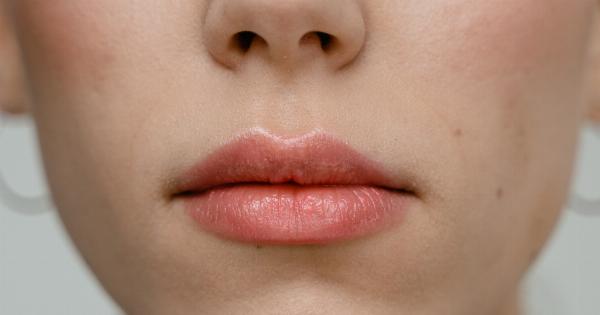Breathing is an essential bodily function that provides us with the oxygen necessary for survival.
But have you ever stopped to think about whether you are breathing properly? Surprisingly, the way you breathe – through your nose or your mouth – can have a significant impact on your overall health and well-being. In this article, we will dive into the age-old debate of nose versus mouth breathing, exploring the benefits and drawbacks of each method.
The Nose: Nature’s Built-In Air Filter
The human nose is an incredible organ that serves multiple functions beyond just smelling. It acts as a natural air filter, conditioning the air we breathe by warming, moisturizing, and cleaning it. Here are some key benefits of nose breathing:.
1. Improved Oxygenation
When you breathe through your nose, the tiny hairs and mucus lining in your nasal passages help filter out harmful particles, allergens, and dust from the air.
This filtering mechanism ensures that the air you inhale is cleaner and free from potential respiratory irritants. Additionally, the intricate network of blood vessels present in the nose helps to warm and humidify the incoming air, making it more favorable for the delicate lung tissues.
2. Increased Nitric Oxide Production
Nose breathing promotes the production of nitric oxide, a beneficial molecule produced by the cells lining the nasal cavity. Nitric oxide plays a crucial role in widening the airways and increasing oxygen uptake in the lungs.
It also helps regulate blood pressure and supports the immune system’s defense against respiratory infections.
3. Proper Posture and Breathing Mechanics
When you breathe through your nose, it naturally encourages better posture and proper breathing mechanics. As you inhale through your nose, your diaphragm, a dome-shaped muscle located below your lungs, contracts and moves downward.
This downward movement not only allows for deeper inhalations but also stimulates the relaxation response in your body, reducing stress and promoting relaxation.
4. Enhanced Lung Efficiency
The nostrils have smaller openings compared to the mouth, which creates resistance to the airflow. This resistance results in a slower and more controlled inhalation, allowing for greater absorption of oxygen by the lungs.
Nose breathing facilitates the exchange of gases in the lungs, ensuring a higher oxygen saturation in the bloodstream.
The Drawbacks of Nose Breathing
While nose breathing offers numerous benefits, it may not always be the most suitable option, particularly during physical exertion or certain medical conditions. Here are a few instances where mouth breathing might be preferred:.
1. Intense Physical Activity
During intense workouts or physical activities that demand large amounts of oxygen, nasal breathing alone may not suffice. The smaller nasal passages may not be able to supply the required amount of oxygen efficiently.
This is why many athletes tend to breathe through their mouths during high-intensity exercises to maximize their oxygen intake.
2. Nasal Obstruction
For individuals with chronic nasal congestion or structural abnormalities like a deviated septum, nose breathing can be challenging.
Breathing through the mouth becomes a necessity to maintain adequate airflow and prevent discomfort or breathing difficulties.
3. Respiratory Infections
During bouts of cold, flu, or other respiratory infections, nasal congestion is a common symptom. Breathing through the mouth becomes necessary in such situations to allow air passage and prevent significant discomfort or respiratory distress.
Mouth Breathing: A Temporary Solution
Mouth breathing tends to be the default option for many individuals, especially those with chronic nasal congestion or those who habitually breathe through their mouths. While it may seem convenient, mouth breathing can have certain downsides:.
1. Reduced Air Quality
When you breathe through your mouth, the air enters your lungs without being filtered or humidified.
This can pose problems, especially in environments with poor air quality or allergens, as the incoming air can irritate the airways and potentially trigger respiratory issues.
2. Dry Mouth and Throat
Mouth breathing can cause dryness in the mouth and throat due to the lack of moisture provided by the nasal passages. This can lead to discomfort, hoarseness, and increased susceptibility to oral health problems such as bad breath and tooth decay.
3. Impaired Sleep and Snoring
Mouth breathing during sleep can disrupt your sleep quality and contribute to snoring or sleep apnea.
When you breathe through your mouth while sleeping, your mouth tends to fall open, obstructing the airway and causing these sleep-related breathing issues.
The Ideal Approach: Nasal Breathing with Conscious Mouth Use
While it may seem like a battle between nose and mouth breathing, the truth is, both methods have their advantages and disadvantages.
The key to optimal breathing lies in adopting a mindful approach, using nasal breathing as the primary method and allowing for mouth breathing when necessary.
By prioritizing nasal breathing in your daily life, you can take advantage of its numerous benefits, such as improved oxygenation, enhanced lung efficiency, and proper breathing mechanics.
However, during intense physical activities or instances of nasal congestion, your body may naturally switch to mouth breathing to ensure adequate oxygen supply or unobstructed airflow.
It is important to note that chronic mouth breathing, especially during non-physical activities, can have long-term negative consequences on your health. Mouth breathing should be an exception, not the norm.
Conclusion
In the nose versus mouth breathing debate, nasal breathing emerges as the clear winner due to its additional physiological benefits and air filtration capabilities.
However, the ideal approach lies in adopting conscious nasal breathing while allowing for mouth breathing during necessary situations. By embracing mindful breathing techniques, you can optimize your overall health and well-being.































